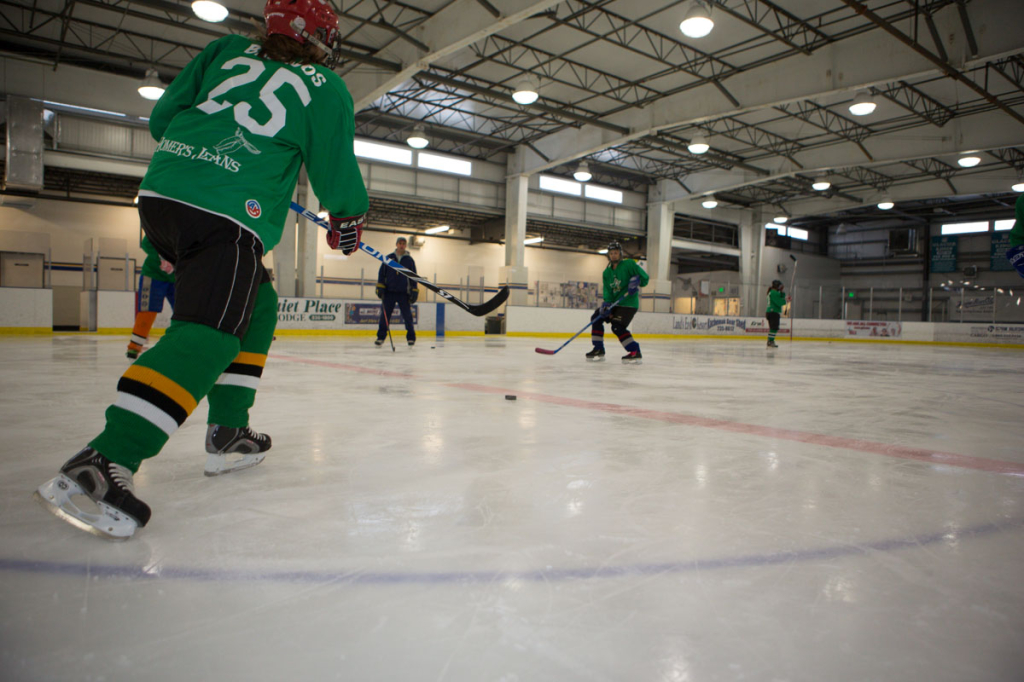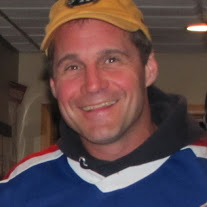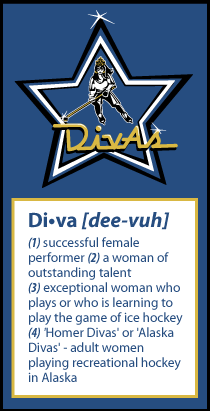Are you ready to coach? Part 2
If you want to (or are asked to) coach women’s adult recreational hockey, there are a few questions you will need to ask yourself. Be sure to read Part 1 for the first important questions.
Do you think you could create the situation where your players are not comfortable… but are fine with that?
 The most productive practices are when you get players to the edge of their skill level and allow them to struggle with slow, quality repetitions. This is what Dan Coyle, author of The Talent Code, calls “deep practice”. Reaching beyond, struggling and pushing yourself beyond your comfort level are hard work and borderline unpleasant. No one will see immediate results. It will look like failure. Why would anyone do that in recreational hockey?
The most productive practices are when you get players to the edge of their skill level and allow them to struggle with slow, quality repetitions. This is what Dan Coyle, author of The Talent Code, calls “deep practice”. Reaching beyond, struggling and pushing yourself beyond your comfort level are hard work and borderline unpleasant. No one will see immediate results. It will look like failure. Why would anyone do that in recreational hockey?
This is one of those paradoxes. The Divas are there to have fun. Some want to become competent. Some want to master skills. If you coach the path to skill development and reinforce that the better they get the more fun they will have ,your team will thrive.
Secret: The virtuous circle: Few things are fun until you are good at it. You need drilling and getting through the tough reps, the discipline and hard work to get to the success and fun.
A big part of a productive practice will be when you stand back and watch (I go around and encourage and make some simple suggestions) players working on an individual skill. You will know it when they are immersed in it, struggling, concentrating, being frustrated. The most important thing a coach does is teaching a player how to practice – how to approach things to improve – how to get to the core of the skill, technique or discipline – and then stand back and watch. A coach can’t teach anyone how to play. Players need to learn themselves.
Can you answer why? If not, maybe you shouldn’t be doing that drill or exercise?
I find coaching boys is fairly straight forward. Many of our best practices involve setting up a series of competitions to augment some skills. I try to clearly describe the rules, set some guidelines on how to approach the game or competition, establish rewards for the winners who successfully achieve the skills, and off boys go like Labrador puppies chasing a ball. From my experience, if you do this for adult women someone will either ask silently or say out loud, “Why?” And you, as coach, had better be prepared to answer. If you don’t have a good explanation, maybe you shouldn’t be doing this.
I’ve never had my high school team ask me why when I told them to do something. This is interesting. It actually is why I have learned more from coaching women than I ever did from coaching high school age boys. It has made me ask ‘why?’ myself and lead me to the methods of coaching and skill acquisition I describe in these articles.
If you are put off by the ‘why’ question you might want to coach youth hockey.
Remember a coach is a teacher of technique in a supportive environment. You have to break things down, keep it fun, keep it crisp. No one wants to stand in line or have long explanations on ice. Everyone wants to acquire skills while getting good exercise.
What does coaching mean to you?
Something has to give some meaning to what you are doing or it will eventually feel like one more imposition on your valuable time and you will resent it. Love for the game goes a long way. Some people would rather just play themselves. Some want to coach kids. You don’t have to be a saint or a miracle worker to coach, but it helps to examine your motivation. Making connections, having fun, teaching the greatest game ever invented, and hopefully being a positive influence on someone’s lives, all keep me coming to the rink.
It’s important to remember that everyone, everyday, is carrying a burden. Be kind, have fun, tell a joke, be a friend and a mentor. Show respect. The flip side of that is no matter how distracted I am by my business or matters of the day, when I walk into the rink I enjoy being able to block it all out and focus on hockey. It is my stress relief, and I’ve come to enjoy the time I get to spend with my team.
As a coach, your words can hurt more than the hardest punch. I’m always joking and want to make things fun. I want to rib a little, because I know I’m dealing with adults, but I know that sometimes my jokes go wrong and can hurt.
You will need to decide what steps are needed to get to the chosen results for your program. Where do your players want to be? When I’m not coaching I am the captain of a fishing boat. Traditionally leadership means convincing others, “I know where we want to go, and I know how to get there.” Well coaching the Divas has been more of a fun adventure than a straight course.
Coaching for me it is all about having relationships with people founded on trust. It is growing, shaping, showing concern, perpetual learning, and adding value to lives. It eventually becomes about teaching and mentoring, and helping others to achieve their goals. Hockey is the means to those connections.
Are you comfortable with chaos?
Often drills that look completely chaotic to you or an outside observer yield the best results. It is all about the struggle on the edge of ability. I call this “being comfortable being uncomfortable.”
 Ingrid mentioned to me that her father was in town and would be watching our practice, so maybe I could make her look good. I smiled and said ok, “I’ll make sure I use you as a demonstator.” We were about to play a talented u19 girls team from Anchorage who I knew would pinch every breakout until we could beat it. This was very frustrating for the Divas last time we played. That practice I had some idea about a new drill to mimic a pinching defenseman but didn’t explain it very well. It was chaotic because we had a lot of skaters that night, and I remember thinking about how it would look to Ingrid’s dad who surely had heard about how much Ingrid was putting into hockey. I stopped the drill and explained what was important to think about, when a defenseman pinches on the break out wing, turn and protect the puck, then take a step off the wall and chip or bank it out. The weak side wing comes across the ice to pick up the puck in the neutral zone. Then we progressed to a second option. Now protect the puck and pass it to a stationary center to beat the pinch.
Ingrid mentioned to me that her father was in town and would be watching our practice, so maybe I could make her look good. I smiled and said ok, “I’ll make sure I use you as a demonstator.” We were about to play a talented u19 girls team from Anchorage who I knew would pinch every breakout until we could beat it. This was very frustrating for the Divas last time we played. That practice I had some idea about a new drill to mimic a pinching defenseman but didn’t explain it very well. It was chaotic because we had a lot of skaters that night, and I remember thinking about how it would look to Ingrid’s dad who surely had heard about how much Ingrid was putting into hockey. I stopped the drill and explained what was important to think about, when a defenseman pinches on the break out wing, turn and protect the puck, then take a step off the wall and chip or bank it out. The weak side wing comes across the ice to pick up the puck in the neutral zone. Then we progressed to a second option. Now protect the puck and pass it to a stationary center to beat the pinch.
As chaotic as the practice drill was, later that night when we scrimmaged I noticed several times when the Divas executed the plays we worked on. I see this time and time again with the Divas: you show a play in practice and they will try it the next game.
Practice or play? or both?
Many times since I’ve coached the Divas I have heard opposing teams complement the improvements of our players. A Diva states: “We have a coach!” I’ve also had players in other Alaskan towns who tell me: “I wish we had a coach”. I tell them they have lots of coaches, they just need someone who is willing to work with them, have fun with it and not be condescending. They also tell me some of the ladies don’t want to practice, they just want to play.
Practice or play or both? This is an important topic. This is guaranteed to happen to you.
Some players will not want a coach (bad experiences?), will not want a male coach, or will not want to practice. They just want to play. That’s fine and that is very real. If your program is offering something that the women are buying and comfortable with the first two issues, this can be resolved. After consulting with your collaborator your team can schedule ice time for practices, ice times for scrimmages or games or do a combination of both so everyone gets what they want. What we settled on over time with the Divas is we usually do a half hour of skills and drills then we scrimmage the rest of the ice time.
As far as players who don’t want to practice, I often wonder if not wanting to practice is the same as not being willing to change? Resistance to the idea of change will kill performance. The skill development model empowers you to perform. It is more exciting to be strong and competent. Your players will have more fun. But your team, rather than you, will be better able to convey this to a skeptical player who is not on the skill development path.
I use the USA Hockey Puck Possession study to reinforce my point with the Divas. How many minutes do you think the first line player with the most minutes in the Salt Lake City Olympics held the puck on his stick in a sixty minute game? Five minutes? No, the best players had 18 minutes of ice time and only had the puck on their sticks an average of 67 SECONDS. So if we do some stick handling drills for the next five minutes you will practice with the puck on your stick five times more that the best players in the world do in a game. That is why we need to do this. In a scrimmage or game you will not be developing these skills. You don’t get enough touches or reps.


